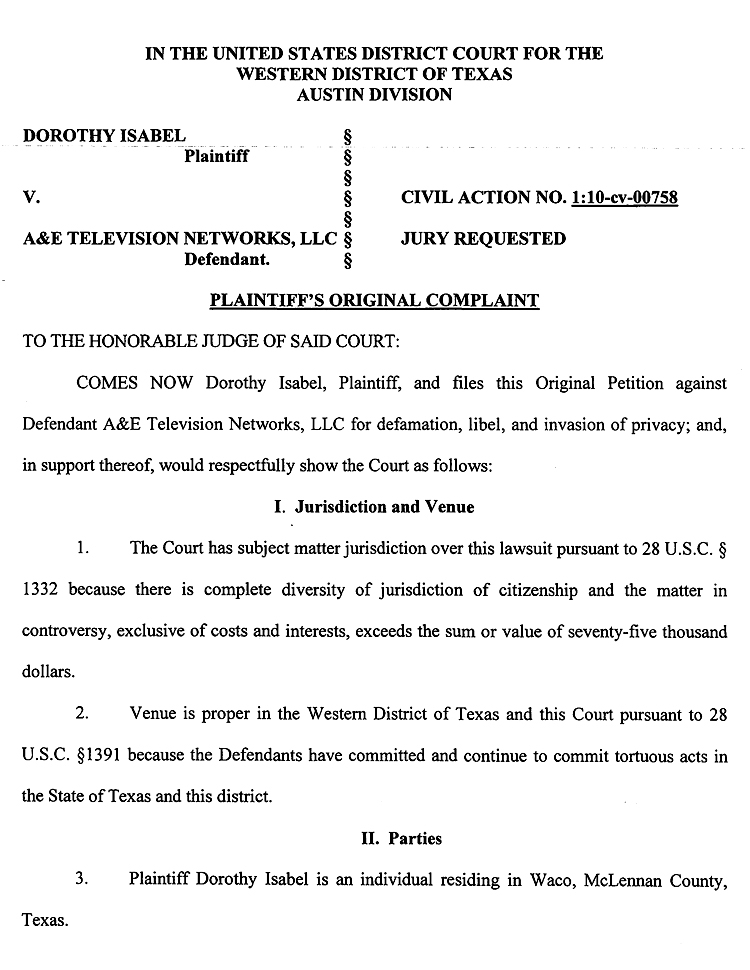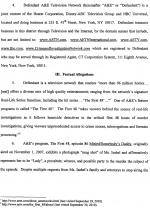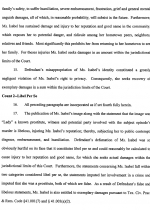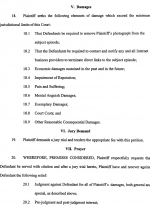That’s My Mug Shot, But I’m Not A Rat
Woman sues A&E over cameo in popular TV series

View Document
OCTOBER 14--A Texas woman whose mug shot appeared in a television documentary about a gang-related murder--a crime for which she had no connection--is suing the A&E network for falsely portraying her as a prostitute who cooperated with police to solve the homicide.
Dorothy Isabel, 35, alleges that the inclusion of her photograph in an episode of A&E’s popular “The First 48” real crime series has caused  her to “fear for her life and personal safety,” according to a lawsuit filed yesterday in U.S. District Court in Austin. Isabel contends that she is “not able to return to Dallas or visit her family due to safety concerns.”
her to “fear for her life and personal safety,” according to a lawsuit filed yesterday in U.S. District Court in Austin. Isabel contends that she is “not able to return to Dallas or visit her family due to safety concerns.”
The A&E episode focuses on how police solved the murder of a Dallas man with the assistance of a prostitute identified only as “Lady.” According to Isabel’s lawsuit, at one point in the program, “Lady is brought in and interviewed by detectives on air, but her face is blurred. Later, a photograph mug shot is shown and identified as Lady. The person in the photograph is in fact Ms. Isabel.”
“Ms. Isabel is not a prostitute and is not the person identified as Lady and has no knowledge of the murder,” according to the lawsuit, a copy of which can be found here. The complaint accuses the cable network of invasion of privacy and libel, and seeks unspecified damages for mental anguish, pain and suffering, and impairment of reputation.
 As seen at left, Isabel’s complaint includes a screen grab (click to enlarge) from the A&E program showing her booking photo. The mug shot, seen above, was snapped in July 1999 following her arrest by the Dallas Police Department on a forgery of a financial instrument charge (a count often associated with passing a bad check).
As seen at left, Isabel’s complaint includes a screen grab (click to enlarge) from the A&E program showing her booking photo. The mug shot, seen above, was snapped in July 1999 following her arrest by the Dallas Police Department on a forgery of a financial instrument charge (a count often associated with passing a bad check).
After the program first aired in November 2007, Isabel reported that “family and friends called asking why she was featured on the show.” Since the episode’s debut, Isabel, who now lives in Waco, claims that she has not been able to return to Dallas “out of fear the local gang might believe it was her that led to the arrest of one of their members.”
Isabel alleges that A&E “intentionally misappropriated” her image, since having “an identity to tie into ‘Lady’s’ character necessarily enhanced the credibility of the show and enticed the viewers.” She adds that the cable network has refused multiple requests to “stop airing the episode and to remove it from A&E’s website.”
“The First 48,” which averages about two million viewers, was described this year as “one of the most-watched nonfiction investigative shows on cable, and one of the bigger successes” on A&E in a Washington Post story. (6 pages)















